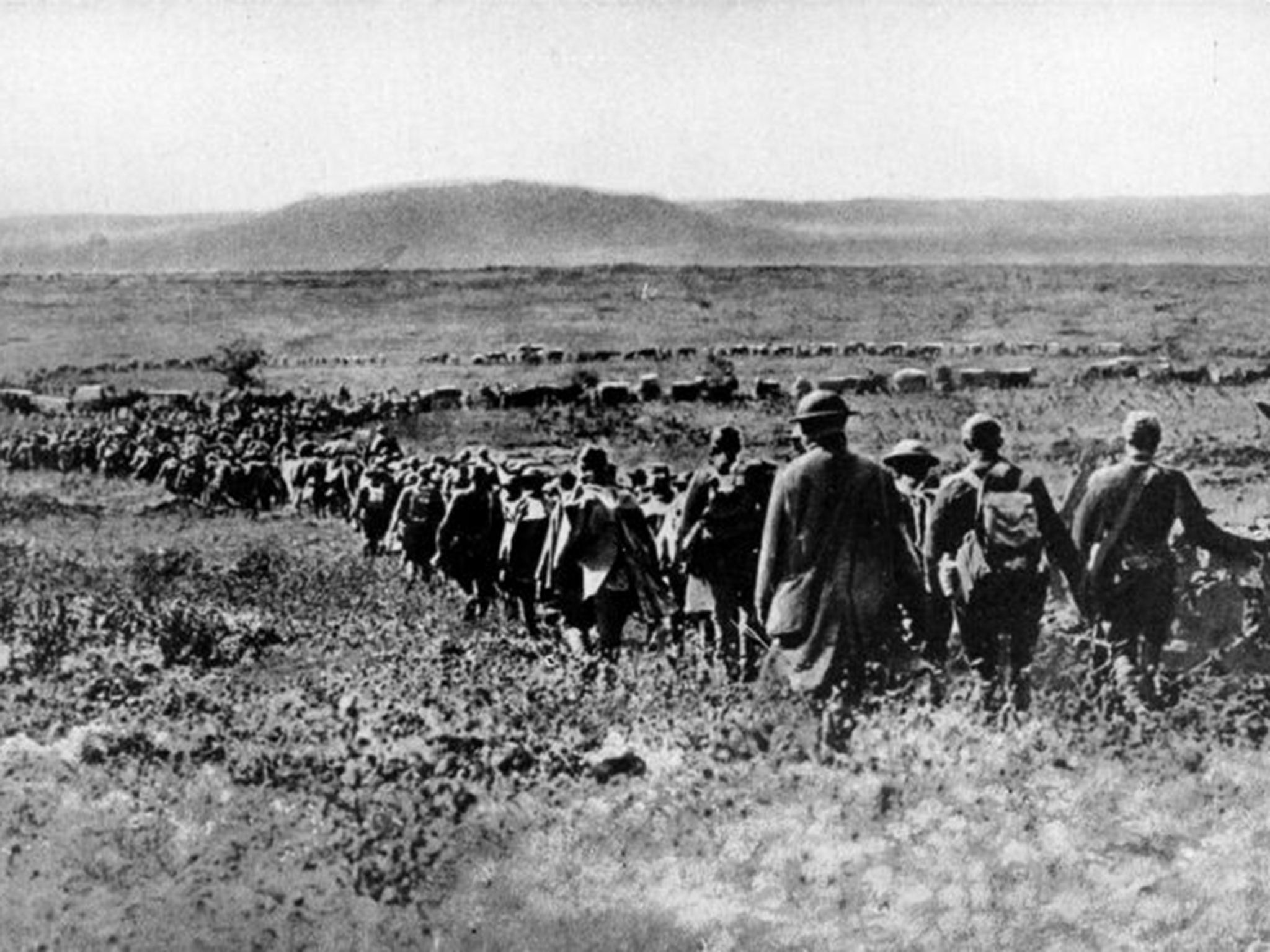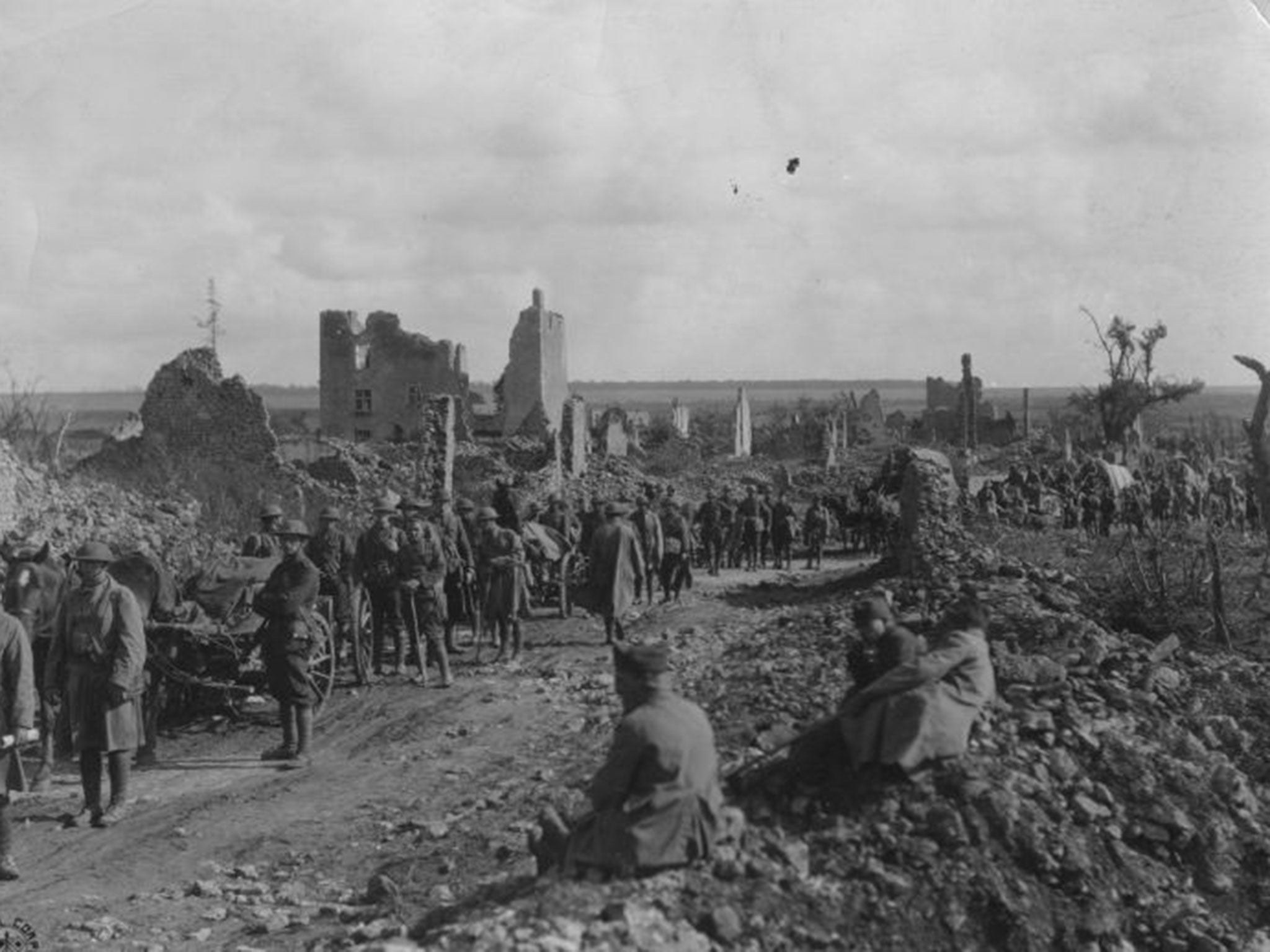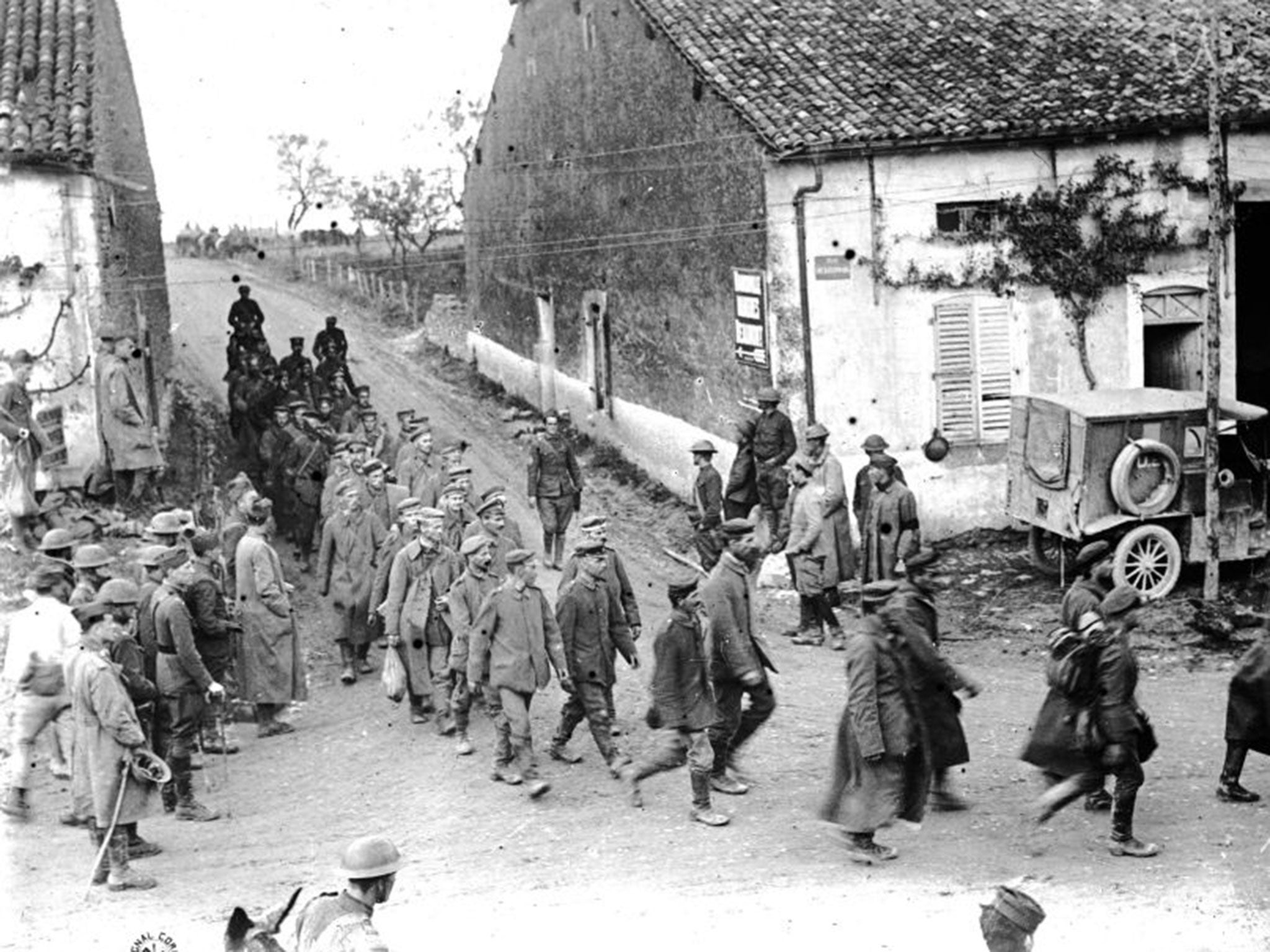A History of the First World War in 100 Moments: America unleashes the doughboys of war in the battle of Saint-Mihiel
When the US expeditionary force launched its first independent action, the results were devastating

Your support helps us to tell the story
From reproductive rights to climate change to Big Tech, The Independent is on the ground when the story is developing. Whether it's investigating the financials of Elon Musk's pro-Trump PAC or producing our latest documentary, 'The A Word', which shines a light on the American women fighting for reproductive rights, we know how important it is to parse out the facts from the messaging.
At such a critical moment in US history, we need reporters on the ground. Your donation allows us to keep sending journalists to speak to both sides of the story.
The Independent is trusted by Americans across the entire political spectrum. And unlike many other quality news outlets, we choose not to lock Americans out of our reporting and analysis with paywalls. We believe quality journalism should be available to everyone, paid for by those who can afford it.
Your support makes all the difference.The weather was surely a negative. “Visibility: heavy driving wind and rain during parts of day and night. Roads: very muddy,” said the official bulletin. But otherwise the outlook for the assault on a huge triangle of enemy territory called the Saint-Mihiel salient, between Verdun and Nancy, looked promising.
It wasn’t just that the German forces which had held the land for nearly all of the war had started a retreat the day before. There was also the pent-up energy of the soldiers waiting to go over the top. This was 12 September 1918, and about to unfold was the first independent offensive of the First World War by the American Expeditionary Force (AEF) of General John Pershing. Morale was as high as German morale was low.
For the Allies, it was a moment that had been a long time coming. The United States had declared war on Germany in April 1917, but the logistics of sending more than a million men over the Atlantic had been daunting, and General Pershing, given command of the AEF by President Woodrow Wilson, wanted them properly trained before seeing battle.
While American soldiers had joined some actions in the summer of 1918 (notably at Château-Thierry and in the Second Battle of the Marne), General Pershing had resisted making his “doughboys” available to fill holes in British and French ranks.
This was the day America would at last be asked to prove its mettle in its own right. Wire-cutting crews were sent out before dawn to tackle the barbed wire. When the gloomy day broke, Pershing’s strategy of isolating the remaining Germans pincer-fashion, liberating villages one by one and retaking territory that for years had blocked train routes east from France, was put into violent, deafening motion.
Half a million men took part, in seven divisions, making it the single largest military undertaking in America’s still young history. Roughly a million shells were fired on German positions in the first four hours. As the foot soldiers and tank formations made gradual advances, teams of horses dragged the heavy guns through the mud to take the barrage forward. But while progress over nearly four days of battle was faster than even General Pershing had hoped, the cost in life, limbs and blood, on both sides, was terrible.

One young soldier, Lieutenant Maury Maverick from Texas, who was later elected to Congress (and who would invent the word “gobbledygook” to describe the jargon he encountered there), contrasted his own fortunes on the battlefield with those of some of his fellow soldiers. “A shell burst above my head. It tore out a piece of my shoulder blade and collarbone and knocked me down. It was a terrific blow, but I was not unconscious. I think it was the bursting of the shell, the air concussion, which knocked me down, and not the shell itself. It was not five seconds, it seemed, before a Medical Corps man was dressing my wounds.
“As he lifted me from the ground, I looked at my four runners, and I saw that the two in the middle had been cut down to a pile of horrid red guts and blood and meat, while the two men on the outside had been cut up somewhat less badly, but no less fatally. It reminded me of nothing I had ever seen before, except a Christmas hog butchering back on the Texas farm.”
The successful retaking of the Saint-Mihiel wedge would prove a crucial step towards the final Allied advance that would bring the war to a close. By 16 September it was done. As many as 13,000 German soldiers were taken prisoner. Roughly 7,000 Allied soldiers had been killed or wounded, along with 5,000 casualties for the Germans. General Pershing and his men were quickly deployed further south on the Western Front for the Meuse-Argonne offensive (from 26 September to 11 November) – but not before a chance meeting in the midst of the battle for Saint-Mihiel between two young American officers with fast-growing reputations. One was a 32-year-old Lieutenant-Colonel, the other a 38-year-old Brigadier-General. They were George Patton and Douglas MacArthur, respectively: men whose places in history would not be set until the Second World War, into which the US was also to be belatedly dragged.

Accounts of what transpired at that meeting differ, beyond the fact that they talked, under shellfire. Perhaps more revealing – both about the character of a future military celebrity and about what it felt like to be at Saint-Mihiel – is a letter that Lt-Col Patton sent to his father, back in America, after the battle.
In this, Patton stuck only to the subject of combat. “When the shelling first started I had some doubts about the advisability of sticking my head over the parapet, but it is just like taking a cold bath, once you get in, it is all right,” he offered. “This is a very egotistical letter but intersting [sic] as it shows that vanity is stronger than fear and that in war as now waged there is little of the element of fear, it is too well organised and too stupendous.”
Tomorrow: The death of Wilfred Owen
The '100 Moments' already published can be seen at: independent.co.uk/greatwar
Subscribe to Independent Premium to bookmark this article
Want to bookmark your favourite articles and stories to read or reference later? Start your Independent Premium subscription today.
Join our commenting forum
Join thought-provoking conversations, follow other Independent readers and see their replies
Comments